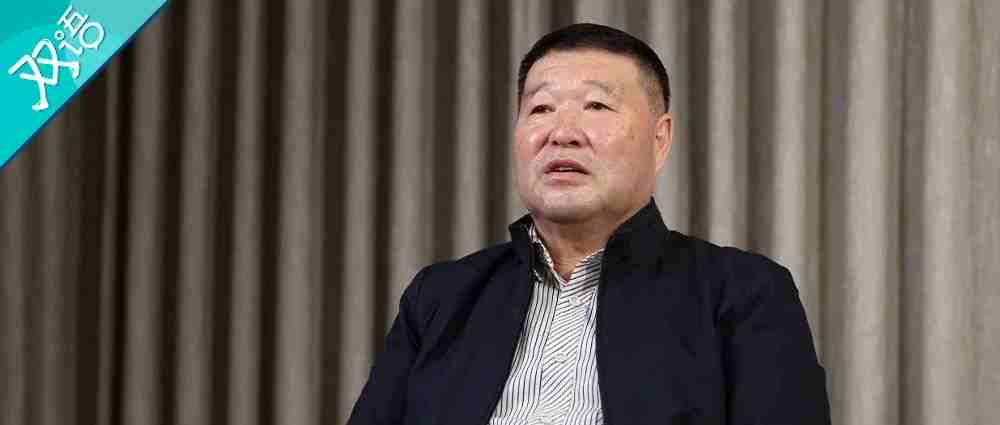民主改革开启西藏现代化进程

在西藏的壮丽风景背后,曾经隐藏着一段沉重的历史。数百年来,这片高原曾经饱受封建农奴制度的摧残,成千上万的人们被困在黑暗中,缺乏基本人权的保障。
2024年是西藏民主改革65周年。1959年3月28日,一场以废除封建农奴制为核心的民主改革在西藏全面展开。
中国藏学研究中心副总干事李德成在接受中国日报《思享者》栏目独家专访时表示,随着西藏的民主改革,这片土地迎来了巨大的变革,它不仅解放了百万农奴,更开启了西藏的现代化进程,成为人权历史上的一座丰碑。
图源:视觉中国
李德成表示,民主改革前的西藏,并不是很多西方人想象中的“天堂”,而是一片被腐朽、落后和黑暗笼罩的土地。
Before the democratic reform was launched in 1959, Tibet, far from being a paradise, was in the grip of a corrupt, backward, and dark feudal serfdom.
他说那时西藏的农奴和奴隶没有任何的人生自由可言,基本上被视为会说话的牲畜。
The serfs and slaves in Tibet didn't have any freedom. They were essentially considered talking livestock.
然而,西藏的民主改革解放了农奴,赋予他们个人自由、平等权利,并拥有土地、牲畜和其他生产资料的所有权。
However, the democratic reform in Tibet emancipated the serfs. The reform not only granted personal freedom and equal rights to the former serfs, but also provided them with land, livestock, pastures and other means of production to improve their socioeconomic status.
李德成说,这使他们成为了自己命运和国家的真正主人。
This made them true masters of their destiny and the country.
相比之下,尽管美国的废奴运动推翻了奴隶制,但被解放的奴隶并没有获得与西藏农奴广泛解放相媲美的自由和权利。李德成指出,在美国的废奴运动后,平等权利的保障没有得到落实,种族隔离和歧视等问题仍然存在,成为美国社会的顽疾。
In contrast, equal rights were not granted to former slaves after their emancipation in the US, leading to persistent issues such as racial segregation and racial discrimination, which have remained chronic problems in US society.
李德成表示,西藏的民主改革开启了西藏全面现代化的进程,涵盖了西藏社会的各个方面。历史上,西藏的经济极度落后,可以说是一穷二白,没有形成任何规模,经济发展速度极低。
Historically, Tibet’s economy was extremely underdeveloped, and its various economic sectors were not operating on a substantial scale, resulting in very slow development.
然而,西藏民主改革极大激发了广大农奴的劳动和建设新西藏的热情,西藏的生产力得到了解放,农业、工业和各种社会事业实现快速发展,而且还很好地保护发扬了传统文化以及保护了生态环境。
However, following the democratic reform, the productive forces were liberated. This catalyzed the enthusiasm of the former serfs for labor and the construction of new Xizang (Xizang autonomous region was founded in 1965). Consequently, agriculture, industry and various social endeavors in Xizang experienced rapid development.
比如,2019年,国家拨款10亿元支持西藏藏医药大学新校区建设,培养了7600多名藏医药专业人才。西藏基层乡镇卫生院藏医药服务覆盖率达94.4%,在保障人民健康和推动文化、经济发展方面发挥重要作用。在党和政府的支持下,藏医药产业实现了标准化、规模化发展,为西藏现代化建设提供了重要支撑。
此外,西藏建立了现代学校,从小学到中学到大学,实现了教育的全覆盖。农牧民子女的入学率接近100%。
Through the democratic reform, modern schools were built, providing education from the primary to the secondary and tertiary level. The enrollment rate of children from the vast farming and herding communities in Xizang has reached close to 100 percent.
李德成表示,这是一个巨大的历史飞跃。
This marks a monumental historical leap forward.
李德成认为,当代西藏在实践中国式现代化的过程中尤为引人注目。中国式现代化是一种全面发展的现代化,西藏也不例外。西藏不仅需要经济、政治和社会发展,还需要文化的提升、生态文明建设以及全面发展,才能实现完整的现代化。
Contemporary Xizang’s practice of Chinese modernization is particularly noteworthy. Chinese modernization means comprehensive progress, which Xizang has been undergoing, as it requires not only economic, political and social development but also cultural advancement, construction of ecological civilization, and comprehensive development to achieve complete modernization.
图源:视觉中国
在中国式现代化的道路上,人与自然的和谐共生是其中一个重要的理念。李德成说这一原则在西藏的现代化实践中得到了深刻体现。
Chinese modernization emphasizes the harmonious coexistence between humanity and nature, a principle widely reflected in contemporary Xizang’s modernization practice.
西藏的地理和高原环境独一无二,它不仅是世界的屋脊,也是中国重要的水源地之一。因此,保护西藏的环境、水资源、生态环境以及各种物种都至关重要。
Xizang’s geographical and high-altitude environment is truly unique, as it is not only the "Roof of the World" but also an important source of water resources for the Chinese nation. Therefore, the protection of its environment, water resources, ecological environment and its flora and fauna is extremely important.
藏传佛教的教义与环境保护理念是一致的。例如,不杀生的理念以及对神山、神水和神湖的崇敬,都促进了对自然资源的保护。这些理念不仅为今天的生态文明建设提供了支撑,而且对引导信众参与生态文明建设也大有裨益。
In terms of the relationship between Tibetan Buddhism and environmental protection, Tibetan Buddhism advocates environmental conservation. For instance, the concept of non-violence and the reverence for sacred mountains, lakes and rivers all promote the protection of natural assets.
编辑:姚宇馨
推 荐 阅 读
最新评论
推荐文章
作者最新文章
你可能感兴趣的文章
Copyright Disclaimer: The copyright of contents (including texts, images, videos and audios) posted above belong to the User who shared or the third-party website which the User shared from. If you found your copyright have been infringed, please send a DMCA takedown notice to [email protected]. For more detail of the source, please click on the button "Read Original Post" below. For other communications, please send to [email protected].
版权声明:以上内容为用户推荐收藏至CareerEngine平台,其内容(含文字、图片、视频、音频等)及知识版权均属用户或用户转发自的第三方网站,如涉嫌侵权,请通知[email protected]进行信息删除。如需查看信息来源,请点击“查看原文”。如需洽谈其它事宜,请联系[email protected]。
版权声明:以上内容为用户推荐收藏至CareerEngine平台,其内容(含文字、图片、视频、音频等)及知识版权均属用户或用户转发自的第三方网站,如涉嫌侵权,请通知[email protected]进行信息删除。如需查看信息来源,请点击“查看原文”。如需洽谈其它事宜,请联系[email protected]。